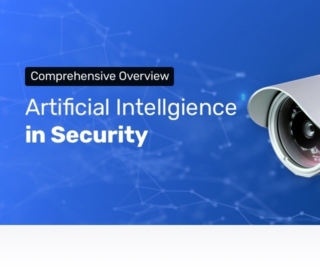
In our previous report, we covered the current use cases for AI in construction and building. As of now, numerous companies claim to assist building maintenance managers in aspects of their roles from optimizing energy usage in building to improving the comfort of building occupants.
We researched the space to better understand where AI comes into play in the building automation sector and to answer the following questions:
- What types of AI applications are currently in use in building automation?
- What tangible results has AI driven in building automation?
- Are there any common trends among these innovation efforts? How could these trends affect the future of building automation?
This report covers companies offering software across 2 applications:
- Facility Management
- Energy Use Analytics
This article intends to provide business leaders in the building automation space with an idea of what they can currently expect from Ai in their industry. We hope that this article allows business leaders in building automation to garner insights they can confidently relay to their executive teams so they can make informed decisions when thinking about AI adoption. At the very least, this article intends to act as a method of reducing the time business leaders in building automation spend researching AI companies with whom they may (or may not) be interested in working.
Facility Management
PointGrab
PointGrab is an Israel-based company that offers a platform including an image sensing hardware device and a cloud management software called CogniPoint, which they claim can help building maintenance managers reduce operational costs by using AI to automate and optimize facility management.
PointGrab claims users can integrate their CogniPoint solution into existing building automation systems. Additionally the Cognipoint sensor is installed in specific rooms in the building to track the number of occupants. The sensor can be connected to the buildings’ existing local area network (LAN), Power over Ethernet (POE) or WiFi connections.
The company claims each of their sensor devices can cover up to 48 square meters (or 520 sq ft). The sensor unit reportedly uses computer vision to analyze the number of occupants in a room and their positions and transmits this data in real time to the CogniPoint Management System.
Then, CogniPoint Management System interfaces with lighting, heating, and air conditioning systems in buildings to optimize the use of workstations and meeting rooms. The system then provides the necessary signals to the building’s existing building automation software to control working conditions in an office space.
Below is a short 2-minute video demonstrating how CogniPoint works:
PointGrab does not make available any case studies reporting success with their software.
PointGrab lists Philips Lighting, MapIQ, ABB and TYCO Innovation as some of their past clients and partners.
Although PointGrab seems to have an algorithm development team, we were unable to find any C-level executives with robust AI experience on the company’s team.
We covered PointGrab previously in our Machine Learning for Law Enforcement report.
IBM
IBM offers the Watson IoT platform, which they claim can help facility management services businesses improve energy efficiency in buildings and make them personalized/user-friendly using data analytics.
IBM claims users can integrate the Watson IoT platform with building automation systems in several buildings and analyze data from devices and sensors embedded in doors, windows, chairs, meeting rooms, dispensers, and air conditioning systems. Then, Watson IoT platform ingests and learns the most optimized and user-friendly working conditions for different environments. The system then provides a dashboard overview of key building metrics to facility managers which can be used to execute optimization suggestions from the system.
Below is a short 3-minute video demonstrating how Watson IoT was used to automate ISS’s offices in Copenhagen:
IBM claims to have helped ISS gain new, insights from sensor data in corporate offices that helped improve the comfort levels of users and simultaneously optimize energy usage. ISS deployed occupancy and other sensors in meeting rooms, chairs, and tables in their Copenhagen office. IBM worked alongside employees from ISS, to integrate and analyze the data collected by these sensors to identify patterns that help optimize energy usage such as automatically turning off HVAC systems when no occupants are detected. We could not find evidence of any measurable results for this case study.
IBM also lists Dow Chemicals, Tyréns AB and KONE as some of their past clients for the Watson IoT platform.
Energy Use Analytics
Verdigris
Verdigris is a California-based company that offers a software including a hardware IoT Energy Meter and an analytics platform, which they claim can help facility management services businesses reduce energy spend using sensors and data analytics.
Verdigris claims users can install their IoT Energy Meter hardware device at electrical circuit panels. The company’s website states that this can be done by any licensed electrician and usually takes around 30-120 minutes. The energy meter then transmits data about electricity usage over Wi-Fi or 4G/LTE to the cloud. Then, their software ingests the data and identifies hidden anomalies from power quality data and other voltage and current specific data collected by the energy meter to alert users when energy usage is different from expected levels. The system then provides alert notifications and energy usage reports through a dashboard which can be viewed on desktops or smartphones.
Below is a short 2-minute video demonstrating how the Verdigris software works:
Verdigris claims to have helped Grand Hyatt San Francisco (GHSF) dynamically manage their energy demand. GHSF worked with Verdigris in a pilot where they installed four systems in their hotel aimed at gaining personalized recommendations and opportunities to save on labor costs. According to Verdigris, this resulted in GHSF identifying savings opportunities of $2,100 per month in avoided maintenance energy usage and equipment malfunction.
Verdigris also lists W Hotels, InterContinental Hotels Group and Meridien as some of their past clients.
Verdigris seems to have a machine learning Data Scientist in Chiqun Zhang, who holds PhD in Computational and Applied Mathematics and an MS in Computer Science from Carnegie-Mellon. We were unable to find any C-level executives with robust AI experience on the company’s team.
Bidgely
Bidgely offers a software which they claim can help electric utility businesses gather data about the amount and cost of energy used by various home appliances and send customers visual representations of this data to increase engagement using machine learning.
Bidgely claims users can receive information about their energy usage through emails, SMS, a web portal, or mobile app. Bidgely claims their machine learning models were trained on a database of over 50 billion meter readings from smart meters and can automatically itemize major loads in a house. Then, the Bidgely software uses machine learning algorithms to identify the power consumption levels for each appliance in a home and send alerts to the user with recommendations on reducing energy use. The system then provides users with actionable insights on their dashboards for energy saving tips such as turn down the thermostat by two degrees or unplug the computer at night.
Below is a short 1-minute video demonstrating how Bidgely systems work on their app:
Bidgely claims to have helped United Energy (UE) reduce peak electrical load amongst their residential customers. The utility firm integrated the Bidgely HomeBeat app with its offering to customers in a pilot project which could help the residential users access their real-time energy usage and gain insights on reducing their overall footprint. According to Bidgely, this resulted in average peak load shift of over 30% per user per event in the pilot project as shown in the figure below from Bidgely.
Bidgely also lists Duke Energy, Georgia Power, London Hyfro, Pacific Gas and Electric Company as some of their past clients.
Basant Kumar Pandey is Senior Data Scientist at Bidgely at Bidgely. Previously, Pandey served as Technical Lead at Samsung Research India – Bangalore, where he worked with face clustering and recognition in videos.
Takeaways for Business Leaders in Facility Management
Based on the companies we found, optimizing energy costs seems to be the most commonplace application for AI in building automation. Large companies like IBM and startups offer commercial analytics products aimed at smart buildings.
Bidgely seems to have raised over $51.6M in funding and has over 137 employees. A large part of their success seems to have stemmed from offering products to electric utilities that offer mutual benefits to both the utility and its customers. Bidgely also has several successful case studies and projects with utility firms in US and UK. PointGrab recently announced a $7 million investment from Philips Lighting on top of their existing investments from ABB Technology Ventures (ATV).
Businesses can expect AI to become more commonplace in smart building applications since the existence of smart home appliances has created a trove of IoT sensor data. Additional use cases in applications like security and privacy may be well established in the next two to five years. That said, it might be some time before we see buildings using occupant level personal data (such as biometric data) to improve comfort and reduce costs.
Companies in the space seem to be following multiple strategies, with some offering their own hardware sensing devices and others focused on AI analytics software and apps. The building automation industry has several industry standards and protocols that often vary by geography. Building or facility managers in this space might need to be aware of any network of device compatibility issues before engaging in projects.







